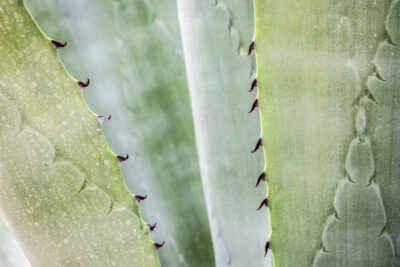
Winter Care Tips: How to Help Succulents Survive the Cold Season

Winter can be a challenging time for succulent owners. These resilient plants are known for their ability to thrive in dry and arid conditions, but they can struggle when exposed to cold temperatures and excess moisture. It is important to provide proper care and protection for your succulents during the winter months to ensure their survival and health.
We will discuss some essential tips for winter care of succulents. We will explore the impact of cold temperatures on succulents and how to protect them from frost and freezing. Additionally, we will provide guidance on adjusting watering schedules, choosing suitable containers, and creating a conducive indoor environment for your succulents during the winter season. By following these tips, you can help your succulents stay healthy and vibrant throughout the cold season.
- Place succulents in a location with ample sunlight during winter.
- Protect succulents from freezing temperatures by bringing them indoors.
- Water succulents sparingly during winter to prevent overwatering.
- Water succulents sparingly during winter to prevent overwatering.
- Use a well-draining soil mixture to avoid waterlogged roots.
- Avoid fertilizing succulents during winter as they enter a period of dormancy.
- Insulate outdoor succulents with a layer of mulch or frost cloth.
- Keep succulents away from drafty areas or cold windows.
- Avoid watering succulents when the soil is frozen or extremely cold.
- Monitor succulents for signs of damage or stress and take appropriate action.
- Maintain good air circulation around succulents to prevent fungal diseases
- Frequently Asked Questions
Place succulents in a location with ample sunlight during winter.
During the winter season, it is crucial to provide your succulents with enough sunlight to thrive. Place them in a location that receives ample sunlight throughout the day. Succulents are sun-loving plants and require at least six hours of direct sunlight to maintain their health and vitality.
Choose a spot near a south-facing window or a bright corner of your home where they can soak up the sunlight. If you notice that your succulents are not receiving enough light, consider using artificial grow lights to supplement their needs.
Remember to rotate your succulents regularly to ensure that all sides receive equal exposure to sunlight. This will prevent them from leaning or stretching towards the light source, maintaining their compact and sturdy growth.
Protect succulents from frost and freezing temperatures.
Succulents are generally hardy plants, but they can still suffer damage from frost and freezing temperatures. To protect your succulents during the winter, follow these tips:
- Bring them indoors: If you live in an area with extremely cold temperatures, it is best to bring your outdoor succulents inside. Find a suitable spot near a window or under a grow light to provide them with enough light and warmth.
- Cover them: For succulents that cannot be moved indoors, consider covering them with frost blankets or floating row covers. These protective barriers will shield them from frost and freezing temperatures.
- Use mulch: Apply a layer of organic mulch, such as straw or wood chips, around the base of your succulents. This will help insulate the soil and protect the roots from extreme temperature fluctuations.
By taking these precautions, you can ensure that your succulents stay safe and healthy throughout the winter season.
 Reviving Wilting Succulents: The Power of Proper Care
Reviving Wilting Succulents: The Power of Proper CareProtect succulents from freezing temperatures by bringing them indoors.
1. Assess the temperature requirements of your succulents
Before bringing your succulents indoors, it's important to know the temperature requirements of each specific plant. Some succulents can tolerate cooler temperatures better than others, while some are more sensitive to the cold. Research the ideal temperature range for your succulents and make sure to provide them with the appropriate care.
2. Find a suitable indoor location
Look for a well-lit area in your home where your succulents can thrive during the winter months. South-facing windows are usually the best option as they provide ample sunlight. If you don't have access to enough natural light, you can supplement it with grow lights. Ensure that the indoor location has good air circulation to prevent the buildup of excess moisture.
3. Adjust watering frequency
During winter, succulents typically enter a period of dormancy where their growth slows down. As a result, they require less water than during the active growing season. Be mindful of overwatering, as this can lead to root rot. Allow the soil to dry out completely between waterings and reduce the frequency of watering accordingly. Remember, it's always better to underwater than to overwater succulents.
4. Provide extra humidity
Indoor heating during winter can cause the air to become dry, which can be detrimental to succulents. To counteract this, you can increase the humidity around your succulents by using a humidifier or placing a tray filled with water near them. This will help maintain the optimal moisture level for their well-being.
5. Protect from drafty areas
Avoid placing your succulents near drafty areas such as doors, windows, or vents. Cold drafts can shock the plants and make them more susceptible to damage. Ensure that the indoor location you choose provides a stable and consistent temperature for your succulents.
6. Inspect for pests
Before bringing your succulents indoors, thoroughly inspect them for any signs of pests. Common pests such as aphids, mealybugs, or spider mites can hitch a ride on your plants and infest your indoor garden. If you notice any pests, treat them immediately to prevent an infestation.
 The Potential Risks of Repotting Succulents: Can It Harm or Kill Them?
The Potential Risks of Repotting Succulents: Can It Harm or Kill Them?By following these winter care tips, you can ensure that your succulents not only survive but thrive during the cold season. Providing them with the right temperature, lighting, and watering conditions will help them maintain their beautiful form and vibrant colors. Remember to always adapt your care routine based on the specific needs of your succulents. Stay vigilant and enjoy the beauty of your indoor succulent garden all year round.
Water succulents sparingly during winter to prevent overwatering.
Water succulents sparingly during winter to prevent overwatering.
During the winter season, succulents enter a period of dormancy where their growth slows down significantly. This means that they require less water compared to other times of the year. Overwatering during winter can lead to root rot and other issues that can harm your succulents.
Here are some tips to help you water your succulents properly during the cold season:
- Check the soil moisture: Before watering your succulents, always check the moisture level of the soil. Stick your finger about an inch into the soil to determine if it is dry or still slightly moist. If the soil feels damp, it is best to wait a few more days before watering.
- Water deeply but infrequently: When it's time to water, give your succulents a thorough soak. Water the soil until it is evenly moist, but avoid letting water accumulate in the saucer or pot. Allow the soil to dry out completely before watering again. This helps prevent the roots from sitting in overly wet conditions, which can lead to root rot.
- Adjust watering frequency: Depending on the specific needs of your succulents and the conditions in your home, you may need to adjust the watering frequency. If your succulents are located in a cooler area or receive less sunlight during winter, they may require even less water. Monitor your plants closely and adjust accordingly.
- Use well-draining soil: Succulents thrive in well-draining soil that allows excess water to flow out easily. Ensure that the soil mix you use is specifically formulated for succulents or add perlite or sand to improve drainage. This helps prevent water from sitting in the roots and causing damage.
- Consider indoor conditions: If you are keeping your succulents indoors during winter, take into account that the dry indoor air can affect their moisture needs. Indoor heating systems can cause the air to become drier, so you may need to water your succulents slightly more often to compensate for the lack of humidity.
By following these winter care tips, you can ensure that your succulents survive the cold season and thrive when spring arrives. Remember, the key is to water sparingly and pay close attention to the specific needs of your succulents. Happy gardening!
Use a well-draining soil mixture to avoid waterlogged roots.
 Why Did My Succulent Leaf Fall Off? Causes and Solutions
Why Did My Succulent Leaf Fall Off? Causes and SolutionsOne of the most important winter care tips for succulents is to use a well-draining soil mixture. Succulents are naturally adapted to dry environments and are not equipped to handle excessive moisture. During the cold season, it is crucial to prevent waterlogged roots, as this can lead to root rot and ultimately the death of your succulent.
When preparing the soil mixture for your succulents, make sure to include materials that promote drainage. A popular option is a combination of regular potting soil and perlite or coarse sand. These additives help create air pockets in the soil, allowing excess water to flow through and prevent saturation.
It is also advisable to use a pot with drainage holes to further aid in proper water drainage. This allows excess moisture to escape from the bottom of the pot, minimizing the risk of water accumulation around the roots.
Tip: Avoid using heavy, moisture-retaining soils or pots without drainage holes, as these can trap water and increase the chances of root rot.
Avoid fertilizing succulents during winter as they enter a period of dormancy.
Why You Should Avoid Fertilizing Succulents in Winter
During the winter season, succulents go into a state of dormancy. This means that their growth slows down significantly, and they require less water and nutrients to survive. Fertilizing succulents during this time can actually be harmful to them.
When you fertilize succulents in winter, it can stimulate new growth, which is not ideal during their dormant period. This new growth is often weak and vulnerable to the cold temperatures, making the succulent more susceptible to damage.
 Mini Succulent Care: Best Practices for Healthy Growth
Mini Succulent Care: Best Practices for Healthy GrowthAdditionally, fertilizing succulents in winter can disrupt their natural cycle and prevent them from properly entering dormancy. This can lead to imbalances in their growth and overall health.
How to Care for Succulents in Winter
Instead of fertilizing your succulents during winter, focus on providing them with the right care to help them survive the cold season. Here are some tips:
- Reduce watering: Succulents need less water during winter. Only water them when the soil is completely dry, and be sure to allow any excess water to drain away.
- Protect from frost: If your succulents are in pots, consider bringing them indoors or placing them in a protected area when frost is expected. Alternatively, you can cover them with frost blankets or burlap to shield them from the cold.
- Provide adequate light: Place your succulents in a well-lit area where they can receive sufficient sunlight. If natural light is limited, consider using grow lights to supplement their light needs.
- Avoid overwatering: Overwatering can be detrimental to succulents, especially during winter when they are in a dormant state. Ensure that the soil has dried out completely before watering them again.
By following these care tips, you can help your succulents stay healthy and survive the winter season. Remember, it's important to respect their natural dormancy period and avoid fertilizing them until they start actively growing again in spring.
Insulate outdoor succulents with a layer of mulch or frost cloth.
During the cold winter months, it is crucial to provide proper care for your outdoor succulents to ensure their survival. One effective way to protect them from freezing temperatures is by insulating them with a layer of mulch or frost cloth.
Mulching is a simple and effective method that helps regulate soil temperature and retain moisture. Start by removing any weeds or debris around the base of your succulents. Then, apply a layer of organic mulch, such as wood chips or shredded leaves, around the plants. This layer acts as a protective barrier, preventing the soil from freezing and providing insulation for the roots.
If you live in an area with severe winter conditions, consider using frost cloth in addition to mulching. Frost cloth is a breathable fabric that allows sunlight, air, and water to reach the plants while providing insulation. Cover your succulents with the cloth, securing it gently with stakes or clips. Make sure the cloth is not touching the leaves directly, as it can cause damage.
Remember to remove the mulch or frost cloth once the danger of frost has passed. Leaving them on for too long can create excess moisture and lead to fungal diseases or rot.
 What Happens to Succulents After They Bloom?
What Happens to Succulents After They Bloom?Keep succulents away from drafty areas or cold windows.
During the winter season, it is crucial to protect your succulents from drafty areas or cold windows. These plants are native to warm and dry climates, so they are not well-suited to withstand extreme cold temperatures. Exposing them to drafts or chilly windows can cause damage to their delicate leaves and stems.
To ensure the survival of your succulents during the cold season, consider the following tips:
1. Find a warm and sheltered spot for your succulents.
Locate an area in your home that receives ample sunlight and is free from drafts. South-facing windows are usually the best option as they provide maximum sunlight exposure. If you don't have a suitable spot indoors, you can also consider using grow lights to provide your succulents with the necessary light and warmth.
2. Use insulating materials.
Insulate your succulents by placing them in containers with insulation properties. Choose pots made of materials like ceramic or thick plastic that can provide some protection against the cold. Additionally, you can line the inside of the containers with bubble wrap or Styrofoam to create an extra layer of insulation.
3. Limit watering during winter.
Succulents are adapted to survive in dry conditions, so it's important to adjust their watering schedule during winter. Reduce the frequency of watering to prevent overhydration, which can lead to root rot. Only water your succulents when the soil is completely dry, and be cautious not to let water sit in the saucers or trays beneath the pots.
4. Protect from frost.
If you live in an area where frost is common, it's essential to shield your succulents from freezing temperatures. Cover them with frost cloths or blankets overnight when the temperature drops. This protective layer will help retain heat and prevent frost damage.
5. Avoid fertilizing during winter.
Succulents enter a dormant phase during winter, so they don't require as much nutrients as they do during their active growth period. Avoid fertilizing your succulents during this time to prevent excessive growth and potential damage to the plants.
 Caring for an Angel Wing Succulent: Essential Tips and Advice
Caring for an Angel Wing Succulent: Essential Tips and AdviceBy following these winter care tips, you can help your succulents survive the cold season and ensure their health and vibrancy for years to come.
Avoid watering succulents when the soil is frozen or extremely cold.
During the cold winter months, it is crucial to adjust your succulent care routine to ensure their survival. One essential tip to remember is to avoid watering your succulents when the soil is frozen or extremely cold.
Watering succulents in freezing temperatures can lead to significant damage, as the water may turn into ice and expand, causing the plant cells to burst. This can result in irreversible harm to your succulents and even lead to their demise.
To prevent this from happening, it is important to closely monitor the temperature and soil conditions before watering your succulents. If the soil feels frozen or excessively cold to the touch, it's best to hold off on watering until it warms up.
Additionally, it's crucial to remember that succulents have different water requirements during the winter compared to other seasons. Since they experience a period of dormancy, they require less water to survive. Overwatering can lead to root rot and other issues.
When it comes to watering your succulents in winter, it's best to adopt a "less is more" approach. Allow the soil to dry out completely between waterings, ensuring that it is not overly moist. This will help prevent any potential damage caused by freezing temperatures and promote the overall health of your succulents.
Remember, each succulent variety may have slightly different care needs, so it's essential to research the specific requirements of your succulents. By following these winter care tips, you can help your succulents thrive even during the coldest months of the year.
 Common Causes and Solutions: Why Your Succulent Died
Common Causes and Solutions: Why Your Succulent DiedMonitor succulents for signs of damage or stress and take appropriate action.
Succulents are known for their ability to thrive in dry and arid conditions, but they can still be susceptible to damage during the cold winter months. It is important to closely monitor your succulents for any signs of damage or stress and take the necessary steps to ensure their survival.
1. Protect from frost
Frost is one of the biggest threats to succulents during winter. When temperatures drop below freezing, the water in the succulent's cells can freeze and cause irreparable damage. To protect your succulents from frost, consider moving them indoors or covering them with frost blankets or cloths. This will help to insulate the plants and prevent freezing.
2. Adjust watering routine
During winter, succulents enter a period of dormancy and their water requirements decrease. It is important to adjust your watering routine accordingly. Overwatering during this time can lead to root rot and other issues. Allow the soil to dry out completely between waterings and only water when necessary.
3. Provide ample sunlight
Succulents thrive in bright sunlight, and even during winter, they need a good amount of light to stay healthy. Place your succulents in a location where they can receive as much sunlight as possible. If you are growing succulents indoors, consider using grow lights to supplement natural light.
4. Avoid cold drafts
Succulents are sensitive to cold drafts, which can cause stress and damage to their leaves and stems. Keep your succulents away from drafty windows and doors during winter. If you notice any drafts in your home, consider using weatherstripping or draft stoppers to seal them.
5. Provide proper ventilation
While it is important to protect succulents from cold drafts, it is also crucial to provide them with proper ventilation. Good airflow helps prevent the development of fungal diseases. Avoid overcrowding your succulents and ensure that there is enough space between them for air to circulate.
 Can Succulents Thrive when Transplanted Outdoors?
Can Succulents Thrive when Transplanted Outdoors?6. Limit fertilizer application
During winter, succulents do not require as much fertilizer as they do during the growing season. Over-fertilization can lead to salt buildup, which can harm the succulents. Limit the use of fertilizer or opt for a diluted solution if necessary.
7. Inspect for pests
Pests can still be a problem for succulents during winter, although their activity may be reduced. Regularly inspect your succulents for signs of pests such as mealybugs, aphids, or scale insects. If you notice any signs of infestation, take appropriate action to eliminate the pests.
By following these winter care tips, you can help your succulents survive the cold season and ensure their continued health and beauty.
Maintain good air circulation around succulents to prevent fungal diseases
During the cold winter months, it is crucial to maintain good air circulation around your succulents to prevent the occurrence of fungal diseases. Succulents are naturally adapted to dry and arid conditions, so excessive moisture in the air can create a favorable environment for fungal growth.
To ensure proper airflow, avoid overcrowding your succulents. Give them enough space to breathe and grow without being too close to each other. This will help prevent the buildup of humidity and reduce the risk of fungal infections.
Additionally, avoid placing your succulents in areas with poor ventilation, such as closed terrariums or enclosed spaces. These environments trap moisture and can lead to fungal problems. Instead, choose open spaces where air can freely circulate, promoting healthy growth and minimizing the chances of fungal diseases.
Another way to improve air circulation is by periodically removing any debris or dead leaves that may have accumulated around your succulents. These can create a damp and stagnant environment, which is ideal for fungal growth. Regularly inspect your plants and gently remove any fallen leaves or plant material to maintain a clean and dry environment.
 Morning Care: Essential Tips for Maintaining the Beauty of Succulents
Morning Care: Essential Tips for Maintaining the Beauty of SucculentsRemember to water your succulents sparingly during winter as overwatering can lead to root rot and other fungal diseases. Always check the moisture level of the soil before watering and ensure it has dried out completely between waterings. This will help prevent excessive moisture in the soil and reduce the risk of fungal infections.
Maintaining good air circulation around your succulents is essential for their overall health and survival during the cold winter season. By providing enough space, avoiding closed environments, removing debris, and watering appropriately, you can help prevent fungal diseases and keep your succulents thriving even in the coldest months.
Frequently Asked Questions
1. Can succulents survive in cold weather?
Yes, succulents can survive in cold weather as long as they are properly protected from frost and extreme temperatures.
2. How often should I water my succulents in winter?
In winter, succulents require less water as they go into a dormant period. Water them sparingly, allowing the soil to dry out between waterings.
3. Should I bring my succulents indoors during winter?
If the temperature drops below freezing in your area, it is advisable to bring your succulents indoors or provide them with adequate protection to prevent frost damage.
4. How can I protect my outdoor succulents from frost?
To protect outdoor succulents from frost, you can cover them with blankets, burlap, or frost cloths overnight. Avoid using plastic as it can trap moisture and cause rot.
 Trimming Succulent Stems: How to Prune Without Harming the Plant
Trimming Succulent Stems: How to Prune Without Harming the PlantIf you want to read more articles similar to Winter Care Tips: How to Help Succulents Survive the Cold Season, you can visit the Care and Maintenance category.






You Must Read